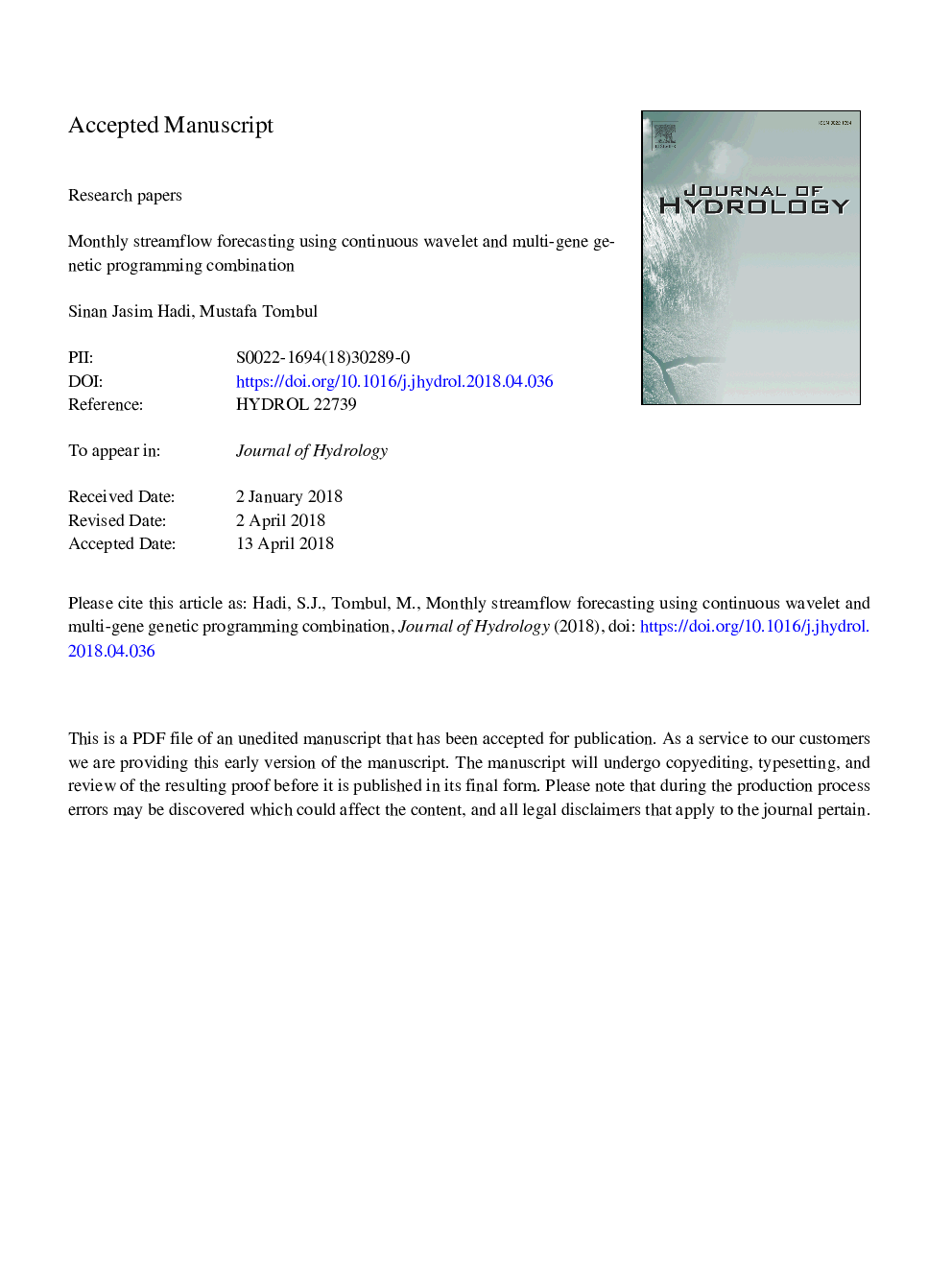| کد مقاله | کد نشریه | سال انتشار | مقاله انگلیسی | نسخه تمام متن |
|---|---|---|---|---|
| 8894849 | 1629893 | 2018 | 50 صفحه PDF | دانلود رایگان |
عنوان انگلیسی مقاله ISI
Monthly streamflow forecasting using continuous wavelet and multi-gene genetic programming combination
ترجمه فارسی عنوان
پیش بینی جریان ماهانه با استفاده از موجک پیوسته و ترکیبی از برنامه نویسی ژنتیک چند
دانلود مقاله + سفارش ترجمه
دانلود مقاله ISI انگلیسی
رایگان برای ایرانیان
کلمات کلیدی
تحول انسجام موجک، تحول موجک مداوم، شبکه های عصبی مصنوعی، مدل های مبتنی بر داده ها،
موضوعات مرتبط
مهندسی و علوم پایه
علوم زمین و سیارات
فرآیندهای سطح زمین
چکیده انگلیسی
Streamflow is an essential component of the hydrologic cycle in the regional and global scale and the main source of fresh water supply. It is highly associated with natural disasters, such as droughts and floods. Therefore, accurate streamflow forecasting is essential. Forecasting streamflow in general and monthly streamflow in particular is a complex process that cannot be handled by data-driven models (DDMs) only and requires pre-processing. Wavelet transformation is a pre-processing technique; however, application of continuous wavelet transformation (CWT) produces many scales that cause deterioration in the performance of any DDM because of the high number of redundant variables. This study proposes multigene genetic programming (MGGP) as a selection tool. After the CWT analysis, it selects important scales to be imposed into the artificial neural network (ANN). A basin located in the southeast of Turkey is selected as case study to prove the forecasting ability of the proposed model. One month ahead downstream flow is used as output, and downstream flow, upstream, rainfall, temperature, and potential evapotranspiration with associated lags are used as inputs. Before modeling, wavelet coherence transformation (WCT) analysis was conducted to analyze the relationship between variables in the time-frequency domain. Several combinations were developed to investigate the effect of the variables on streamflow forecasting. The results indicated a high localized correlation between the streamflow and other variables, especially the upstream. In the models of the standalone layout where the data were entered to ANN and MGGP without CWT, the performance is found poor. In the best-scale layout, where the best scale of the CWT identified as the highest correlated scale is chosen and enters to ANN and MGGP, the performance increased slightly. Using the proposed model, the performance improved dramatically particularly in forecasting the peak values because of the inclusion of several scales in which seasonality and irregularity can be captured. Using hydrological and meteorological variables also improved the ability to forecast the streamflow.
ناشر
Database: Elsevier - ScienceDirect (ساینس دایرکت)
Journal: Journal of Hydrology - Volume 561, June 2018, Pages 674-687
Journal: Journal of Hydrology - Volume 561, June 2018, Pages 674-687
نویسندگان
Sinan Jasim Hadi, Mustafa Tombul,
